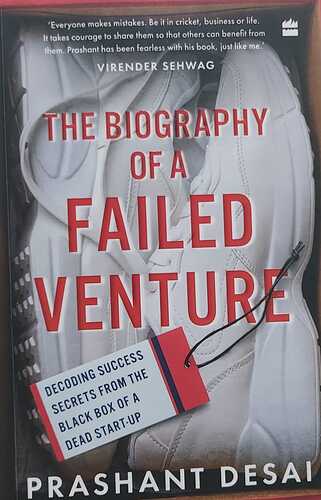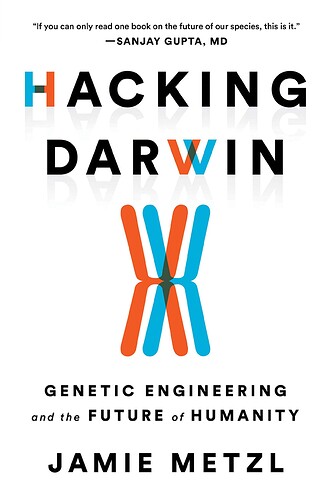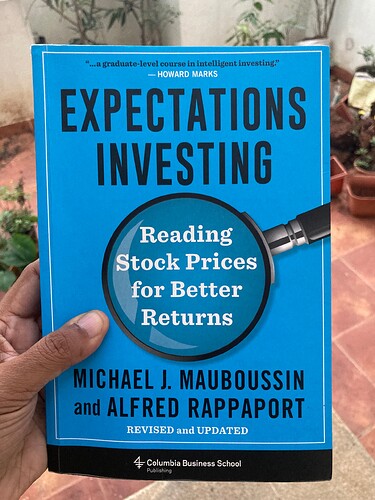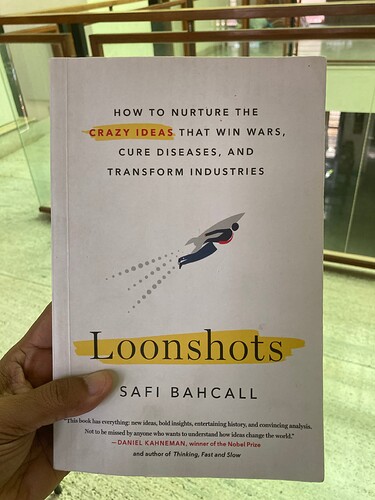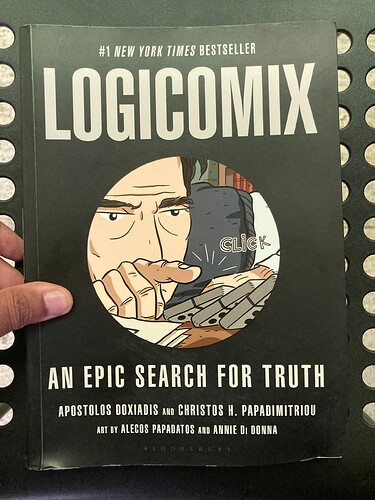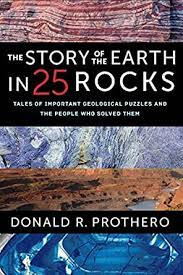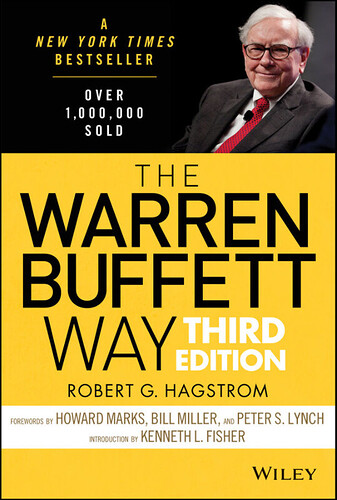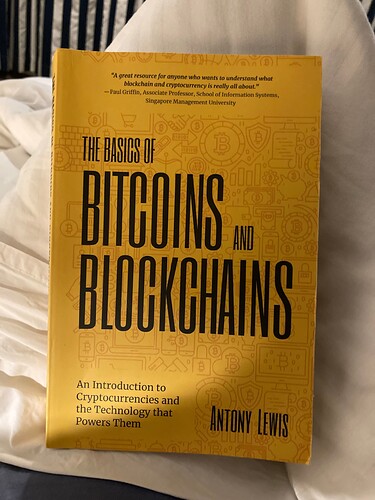Loonshots, Safi Bahcall, 2019 - Excellent book that’s full of great ideas on how to build organizations, incentivize people, function effectively while running steady-state business and also nurture future disruptions.
My notes -
• Moonshot - project with ambitious goal and significance. Loonshot - Neglected, written off project, with an unhinged champion
• Small changes in structure, rather than culture can transform groups/organizations - phase transition from ice to water at the melting point
• “My secret is that I know what to ignore” (Crick after winning Nobel)
• Ibrutunib, a cancer drug was initially written off as dangerous but a change in dilution, made it a blockbuster $21b drug
• Amgen - Insiders call it a law firm with a drug. Its one drug erythropoietin or epo brings $10b a year
• 1970s Nokia was famous for rubber boots and toilet paper. In 2000s it was selling half the smartphones on the planet. An extremely innovative team turned down touchscreen displays and high-res camera and online app store. (Loss of risk-appetite)
• Disney had Lion King in 1994, which grossed nearly a billion worldwide but from 1994-2010, not a single Disney film opened #1 at the box office
• Tie-wearing corporate types become risk-averse executives in a big corporation, but same people in a start-up support wild ideas and take risks. Same person can behave differently based on environment
• ‘More is different’ - the whole becomes more than sum of its parts, and also different from its parts (same molecule of water in ice vs water)
• Stake vs Rank - small teams that share benefits of outcome, care more about ‘stake’ whereas large organizations where there’s more in salary increases or job titles, care more about ‘rank’
• Making originals films say toy story or first bond flick or star wars (loonshots) vs making sequels (franchises) require different group dynamics - no group can do both at the same time well. Former requires artists while the latter requires soldiers
• The weak link usually in a high-stakes competition isn’t lack of ideas, but the transfer of those ideas onto the field (weapon in war for eg.)
• Vannevar Bush transformed the military during WW-II, though he was a civilian. He created a new structure, without affecting the discipline, culture and rigidity of military. This was like ice (soldiers) and water (scientists) in a dynamic equilibrium
• People driving early-stage ideas (Artists) need to be sheltered from participating in steady-growth part of the organization (Soldiers). Artists and Soldiers should feel equally loved (Jony Ive and Tim Cook). This phase-separation and dynamic equilibrium is essential for longevity, innovation and growth. The phase sep creates a loonshot nursery
• Invention and innovation can’t be scheduled to meet deadlines
• Bush and Vail managed the transfer, not the technology. They didn’t involve themselves in any one loonshot, this helped them maintain the balance between loonshots and franchises
• Most loonshots fail at least thrice, almost killing the idea (Eg. statins - Death #1 - consensus view was any drug that reduced cholesterol will be fatal. Death #2 - Test on rats was a failure but that was because rats made poor test subjects for cholesterol since they had mostly HDL, Death #3 - They seemed to cause cancer in dogs)
• Artists (innovators) find promotions distasteful and soldiers (franchise) find anyone who doesn’t make stuff useless - project champions fluent in artist-speak and soldier-speak are essential to bridge the gap
• Persistence and stubbornness - when you listen to problems with genuine curiosity to improve the idea/product vs react with anger and defend. When you question the least, you have to worry the most
• P-type and S-type loonshots. P-type loonshots involve surprising breakthrough in ‘product’ that was widely dismissed before triumphing (telephone). S-type - breakthrough in strategy, involve new way of doing business or new application of existing product. P-type loonshots kill competition quickly (netflix killing video rentals) while S-type loonshots are hard to see coming and gradual and less obvious
• Competitive Anger - being angry at your opponent and also with yourself if you don’t win - Crandall (American Airlines). He would leave ‘I was here, where were you?’ notes on desk of employees over weekends. He would reorganize business, organization to be more efficient (S-type innovator)
• American Airlines developed the first computerized reservation system (Sabre) and gave it all booking agents across the country. Though it was open for all airlines, most bookings were made for American. 30 yrs before Silicon valley was into Big Data, American was analyzing booking data to optimize airline load factors (extract max $s per seat which they called ‘yield management’)
• Hub-and-spoke model was first tried in Airlines industry by startups at the time (Southwestern).
• Companies led by P-type innovators invariably get shocked sooner or later - by S-type innovators, regulatory changes etc.
• IBM was #1 in PC ($5b in sales in 1981) but it outsourced software and microprocessors as it assumed it was not key to is business - to Microsoft and Intel. It managed the P-type loonshot - mainframes to PCs but missed the S-type loonshot - irrelevance of PC manufacturer
• Moses trap - where soldiers and artists are separated but ideas advance only at the mercy of the holy leader (loonshots are picked not on strength of strategy but because of bias in the leader)
• ‘Do not undertake a goal unless its manifestly important and its achievement nearly impossible’ - Edwin Land of Polaroid
• If anything is worth doing, its worth doing in excess - Land - inventor of Polaroid sunglasses, 3D stereoscope movies, polaroid instant camera. The principle of polarization of light, based on which the glasses were based form the basis of LCD displays and several other innovations
• Polaroid instant camera sales went from $1.5 million in 1948 to $1.4 billion in 1978
• Polavision - instant home movie system developed by Polaroid at great expense, bombed badly (poor market fit). Land experienced Moses trap as the idea was championed by him being a P-type innovator
• “The only thing that matters is the bottom line?” - Land to analyst on launch of Polavision. Has become an iconic line. Bush and Vail managed the transfer, rather than the technology. That touch and balance between loonshots and franchises is very important to avoid the Moses trap.
• “I wanted you to see what hubris looks like” - Land referring to his warehouse full of Polavision cameras
• Newton and Jobs were great synthesizers - Kepler’s invisible force keeping planets around the sun, Hooke’s idea of universal gravity, Huygen’s idea of centrifugal force, Borelli’s explanation of elliptical movement of Jupiter’s moons, Wallis’ differential mathematics, Leibniz’s calculus - were all precursors to Newton who integrated them all into a coherent whole and we have simplified this as ‘apple falling on newton’s head’ as a easier story to tell
• Academic disciplines tend to flower on different campuses at different times, like flash mobs
• Lucasfilm’s computer division developed the first 3D rendering, digital editing, optical scanning, laser film printing and CGI - all while making Star Wars
• ‘Some days you are the dog, some days the fire hydrant’ (Jobs after struggling with Pixar and NeXT). Jobs fell into the Moses trap at Pixar and NeXT and fixed that problem in his second-coming with Apple
• The weakest teams don’t analyze failures at all. System mindset is carefully examining quality of decisions, not just the quality of outcomes. There are good decisions that lead to bad outcomes and bad decisions that lead to good outcomes as well
• ‘The best innovation is sometimes the company, the way you organize’ (Jobs)
• Emergent properties - properties of the whole, rather than the parts. The macro, not the micro
• As team size crosses a magic number, the focus shifts from loonshots to focus on careers
• Percolation theory - Idea of water dripping through coffee grounds when its loosely packed vs inability when tightly packed. Same principle applies to way fire spreads in a forest of smoke through a gas mask
• Sparking rate - frequency of small fires in a forest. Reducing sparking rate causes inevitable massive fires in the long run
• Synchrony in nature - how do millions of heart cells beat in rhythm? How do crickets synchronize their chirping? (Incidentally, the latter was a fascinating experience when the sun set and the chirping started almost all at once in a recent trek in the western ghats)
• System with mostly local connections but occasional distant ties - small world network (Stragatz and Watts). Whether a neuronal misfiring is harmless or ends up in a seizure, or an idea becomes viral or fads are all governed by similar dynamics - percolation on a small-world network (Math behind this is explored in ‘The Model Thinker’, very fascinating book)
• Trading cliques - small group of traders who behave the same way as ideas percolate into groups. Water near boiling point forms bubbles that either burst. split or merge with others - trading cliques act like those percolating bubbles
• Super-spreaders (of viral ideas) are not always clusters with great number of links. These clusters of influence are unusually robust and unusually fragile. They are robust against accidental failures in the network but fragile when clusters are greatest influence are removed (Terror networks as well are deactivated this way)
• Dunbar’s number - Magic number of people with whom we can maintain stable relationships. Mormons split in groups of 150 when migrating. Its also found to the size of organization around this number did well
• ‘The dignity of movement of an ice-berg is due to only one-eighth of it being above water.’ - Hemingway’s theory of omission. The power of beautiful prose comes from what you leave out. Same thing with, models say, of forest fires
• Management span - Number of direct reports to a manager. Avg. management span in the US has been between 5-7. For a 1000 people company, an avg. span of 3 means 5 layers of hierarchy, whereas S=10 means only 2
• When hierarchy is deep, employees may find it worthwhile to spend time networking, politicking than on contributing productively. The promotion obsession never stops. Flatter organizations with large span (S), low or no promotions, less hikes (G) but with higher equity (E) always perform better - focus is more on project outcomes than politics. G, S and E affect outcomes
• Other than G,S and E, fitness parameters like ‘project-skill’ fit - a person who is skilled for the job to be done, will politick less. Also ‘return-on-politics’ matters - are promotions decided on merit or lobbying? if its latter, return-on-politics is going to be high. Ratio of project-skill fit and return-on-politics provides the fitness (F)
• Intuition - poorly skill-matched employees in a deeply hierarchical organization that rewards employees not on merit but on politics, is a disaster
• Magic Number M = (E * S^2 * F)/G. Higher equity, higher span, better project-skill fit and low return on politics, low salary growth rewards, allows for higher threshold for organization size while still retaining high productivity - people who can still nurture loonshots, instead of focus on careers
• “Soap operas sell lots of soap” - McElroy of P&G who came with the idea of shows that housewives could watch during the day in which P&G could deliver ads directly to their living rooms
• Eisenhower hired McElroy to shake up the military since he was an outsider with no prior ties to the military or federal govt. (Outsiders always have the best view. In my opinion one should never stay in anything until they become an Insider)
• McElroy established ARPA (advanced research projects agency) which later became DARPA (D for defense). DARPA helped found the internet, GPS, Siri etc. Most consumer technology used today have foundations at DARPA’s loonshots. DARPA is run like a loose collection of small startups, with no career ladder
• Soft equity - Recognition from peers is intangible soft equity. A company with great people will always attract other great people. Increase autonomy, visibility and soft equity (things that worked for DARPA)
• “A soldier will fight long and hard for a bit of colored ribbon” - Napoleon
• Did a problem fail because underlying tech didn’t work (Hypothesis failure) or the people running it botched it (Operational failure)
• Leaders who order their employees to be more innovative without first investing in org. fitness are like casual joggers who order their bodies to run a marathon
• Large stock options or cash bonuses at the top and marginal increases at junior levels creates the wrong kind of incentives and creates the dangerous middle
• When archaeologists incentivized bedouin shepherds who gathered dead sea scrolls by each piece of scrap, it encouraged the shepherds to rip what was found into tiny scraps. Pay contractors by the hour and problems multiply. Reward sales and profits may disappear (customers can be bought) - Examples of poor incentive structure
• Free-rider problem - if your project may not move earnings by much, incentive based on earnings make no sense. People may sit and twiddle thumbs and collect bonuses
• Chief Incentive Officer - experts that understand incentive structure, cognitive biases and are skilled at using both tangible and intangible equity
• The right temp. for tea, averaged over the population might be room temp. as half may like iced tea and others hot tea
• Needham Question - Why the scientific revolution didn’t take place in China, despite all the advantages it had? China and India had over half of the world’s GDP for a 1000 yrs from 500 AD to 1500 AD. Western Europe had between 1 and 2% at the same time
• Paper and printing, compass, gunpowder, cannons, crankshafts, deep-well drilling, cast iron, paper currency, sophisticated astronomical observatories were all present in China centuries before Europe. Chinese leaders focused on franchise projects like Great Wall, Grand canal which were franchise projects while Europe invented the steam engine (loonshot)
• Europe had catholic bishops in Toledo hiring Jews to translate Arab critiques of Greek texts into latin for Germans to read, of imported Chinese technologies and Indian math and Islamic astronomy - they believed that underlying everything we see are universal truths that can be determined through measurement and experiment. The radical of all - they believed these truths could be revealed to anyone
• For 10000 years life expectancy barely changed but between 1800 and 2000, it doubled. Avg economic output was constant between $450 and $650, in 1990 dollars. Since 1800, it has increase 1000%
• For loonshot nursery to flourish, phase separation (artists and soldiers separated), dynamic equilibrium (with a free exchange of ideas between them) and critical mass (loonshot group large enough to nurture several loonshots) are three conditions that must be met
• Scrap-metal collectors, fur traders - Mayer, Goldwyn, Warner, Fox etc. stole Edison’s motion picture invention and when Edison sent patent police after them, they created a town on the Mexican border so they could flee the police if needed - that’s how Hollywood was born
• US SC decision that no one producing movies could also own theatres created phase separation between producers and distributors - The producers were numerous (critical mass) and could nurture loonshots, while distribution was with large studios (dynamic equilibrium) - that’s how movies like Star Wars, James Bond etc. were born. (Same can be seen in India with indie productions making better movies distributed on OTT, than what established large production houses can deliver)
• Insulin changed medicine - it was the first time proteins weren’t the target of drugs, but were the drugs themselves. The same way in which govt. regulation broke the market into producers and distributors, genetic engg. did the same for pharma - breaking pharma into bio techs and big pharma (Roche/Genentech for eg)
• When China outlawed astronomy (it was reserved for the emperor), it effectively killed astronomy in China, whereas Tycho Brahe could get support in Prague instead of Denmark. A fragment ecosystem allows for talent to jump from one lilypad to another until they find a home. This is the same reason why silicon valley produces so many start-ups
• Telescopes invented in Netherlands, were pointed at the sky in Italy, elliptical orbits were discovered in Germany and earth motion analysed in Poland, led to ideas of inertia in Italy and geometry in France and into a unified theory of motion in England (Critical mass). England’s setting up of the Royal Society and separation from Church to pursue science, setup the foundation for wild success, of the kind China or India couldn’t pull off
• Loonshots and disruptions are different - The former is prospective while latter is retrospective
This is a well-researched book with a tonne of source notes and a lot of original ideas I had not come across before. The book is extremely readable too and is quite a page-turner because of the wealth of examples across time. 10/10

